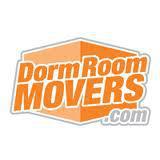
Dorm Room Movers
2/5
888.769.3676
888.769.3676
5111 N Scottsdale Rd Ste 200
Company's Membership needs to be upgraded. Please Become a Member pressing below.
Become a member<a href="/best-movers/Arizona/Scottsdale/dorm-room-movers-reviews-az/"><img width="150" height="133" src="/static/common/images/badge-1.webp" alt="MovingCompany" /></a>To see full content of an review, just click on card that you want to see.

Add a Review